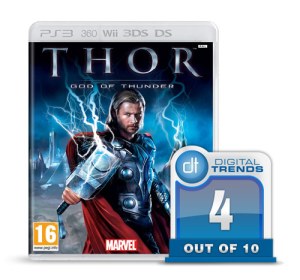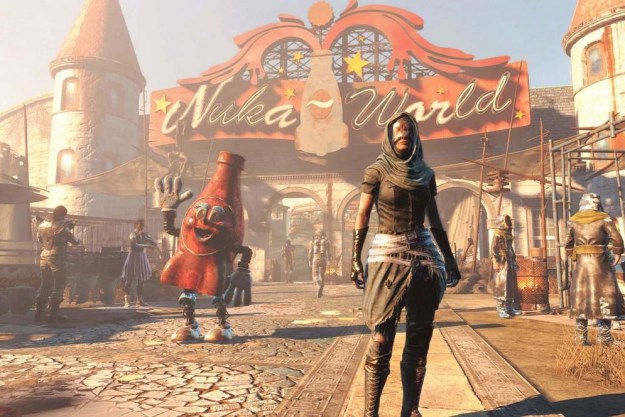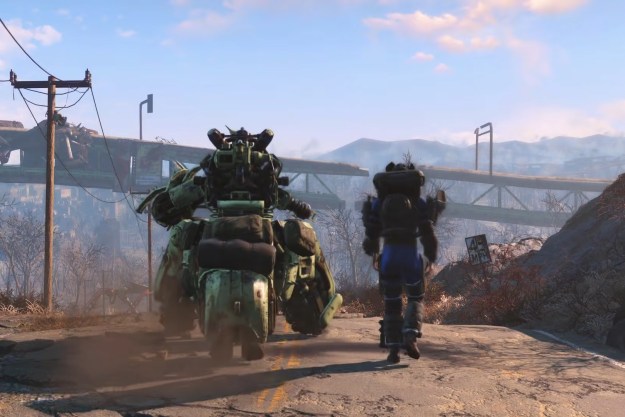 There is a very good and obvious reason that video game adaptions of current movies don’t work. A typical video game development cycle is typically at least two or three years, and can sometimes be much longer. The biggest Hollywood movies generally have a development cycle of around a year and a half at most (there are some films that take longer to develop, but they are the exception). So when a video game is commissioned from a movie, the developers’ back is already against the wall.
There is a very good and obvious reason that video game adaptions of current movies don’t work. A typical video game development cycle is typically at least two or three years, and can sometimes be much longer. The biggest Hollywood movies generally have a development cycle of around a year and a half at most (there are some films that take longer to develop, but they are the exception). So when a video game is commissioned from a movie, the developers’ back is already against the wall.
A video game adaptation needs to rely on the artwork, plot, and storyboards of a movie to even have an idea of where it should go. To fully render a setting like Thor’s home of Asgard, that setting needs to have been fully realized by the movie’s art team. Even if a movie begins pre-production two or more years out, it can still take a year to fully design the settings to the point that the art team is ready to pass it on to others. So games like Thor: God of Thunder, which feature new, unique and specific settings, are at an even greater disadvantage because they have to wait on the filmmakers before they can even get to work. The results are that the game is typically a mess. Thor: God of Thunder is not only an example of how a game adaptation can go wrong, it is such a disaster that it should act as a warning to other games that will come after it.
Developers will tell their children horror stories about Thor: God of Thunder, and warn them that if they don’t eat their vegetables they will be forced to play through the game on hard. That will scare the little tykes straight. It is one thing to have a game that doesn’t look all that great — and Thor looks very bad — and it is another to have the character, enemies and levels look be repetitive — and they are — but when you toss in gameplay that is just broken, you are left with a game that could scare people away from video games. Friends don’t let friends play Thor: God of Thunder.
A story forgotten by all, including the movie
Thor: God of Thunder exists in a different universe from Thor the movie. The plot is neither a recreation of the movie, nor does it fit with the continuity of the film. Basically you are Thor, and following an attack on Asgard by the Frost Giants, you go seeking revenge. There is a bit more to it, but lackluster voice acting, terrible cutscenes and repetitive gameplay will quickly make you forget why you are wading through identical enemy after identical enemy.
To say that the story isn’t compelling undervalues the word “compelling.” It isn’t in the least bit interesting, let alone compelling, but that is an issue with the game in general and not specifically a problem with the plot. The story is there to propel you along from similarly bland-looking location to location, and that is about it. At the start of each chapter, you are given a goal: Fight your way to Point A, head to Point B or something equally arbitrary. Then after several drawn out combat sequences, and a dull cutscene rewards you.
A few of the movie’s actual cast lend their voices, including Chris Hemsworth and Tom Hiddleston as Thor and Loki respectively, but both phone their lines in. Their performances are as lifeless as the rest of the game. But focusing on the story is missing the point. You should focus on the gameplay, because it will haunt your dreams.
The God of Suck
The core idea for Thor‘s combat is good, in theory. In practice, however… The game is a button masher. Flatteringly, you could compare it to God of War. Pragmatically, you could compare it to Dynasty Warriors. More realistically, you could compare it to Fist of the North Star. You have two attacks — the standard hammer attack, and an Odin-powered (magic) attack to finish off the combo. The result is a game where you will hit one button several times, then another. Over and over again. Forever.
It could have been a passable idea, but in practice there are two major flaws with it. When you finish a combo with the Odin-powered heavy attack button, it drains your magic (Odin power) every time. That is annoying, but you gain it back quickly enough. The bigger problem is that it just doesn’t work that often. The hit detection is off, and the sense of depth is warped. Frequently you will think you are landing a powerful and crushing blow on an enemy, but it will totally miss them. You can then try to block the counter attack, but the block is also somewhat finicky. And by finicky, I mean it just chooses not to work most of the time. You can counter an attack if you hit the block at exactly the right time, but when that exact moment is, is a mystery the game chooses to keep to itself. If you are too early and just have your block up when the attack comes, you will still be hit, which makes no sense. Also, if you swing once or twice and then hit block, it can be a full one or two seconds before you raise your shield, which in video game time is like trying to buy Microsoft stock today thinking it was 1986.
If you really want to punish someone — maybe you need information from them but the anti-torture laws are prohibiting you from going all Jack Bauer on them — make someone play the game on the hardest difficulty setting. It cheats blatantly, the hit physics make absolutely no sense and the imbalanced save locations won’t do you any favors.
The camera is bad, but that is to be expected. The only time this is really a major issue is during the game’s platforming sections—something that is even more confusing when you consider that Thor can actually fly. But apparently he chooses not to, except in a few rare occasions. Choosing to fly would actually solve almost every problem you come across in the game. When Thor is redirected to an ice spire that he needs to destroy, instead of walking a long and dangerous route, he could fly there and destroy it in 5 seconds. Maybe he just wants to make it sporting for the enemy.
One place the camera is not guilty but you might think it is, is the puzzles. In truth, they are just poorly designed. And very, very frustrating.
But even putting aside the broken gameplay and the dull combo scheme, the attacks are just weak. You are Thor, god of thunder, son of Odin, the mightiest Avenger, and you wield the legendary Mjolnir. When you hit an enemy with it, they should explode, smited by a vengeful thunder god. But no, they just kinda shrug and keep doing whatever it is they were doing. Sometimes that means they attack you, other times they are busy staring off at a wall. It varies.
At least the music is alright
The music is forgettable but fine, while the graphics are right on par with Xbox 360 launch titles. All of the exotic locations in Thor’s universe are made into a series of repetitive caves, platforms or clearings, where you fight the same, repetitive enemies. They may look slightly different, but they are all fairly identical. You will smack them with the same combos again and again, and just hope the hit mechanics are feeling generous. Bosses are the same. They are all fairly similar, and they all cheat.
Besides being repetitive and dull to look at, the settings, enemies and characters all have a smudged look to them, like the game was rendered in HD at the last possible moment, but designed in SD. It is not pretty. But since there really isn’t anything to look at, it isn’t a major issue.
The experience tree is fairly robust, but when the best thing about a game is the experience tree, there’s trouble in River City.

Conclusion
Fans of mindless button mashers may have a few moments of joy from this uninspired mess of a game. Hardcore fans of Thor—like, people that have tattoos of the character and say things like “verily” and “forsooth”—may be able to endure the game until the ending, but most should just save themselves the pain and skip it.
If this title were an Arcade download on Xbox Live, then maybe it would be worth a look if the price were low enough. Given more time, there may have been an entertaining game buried somewhere in here. The biggest problem with Thor: God of Thunder isn’t the poor graphics, the broken gameplay or the uninspired levels, it is just that the game gets dull and repetitive very quickly.
Sega and developer Liquid Entertainment—the group that brought us Desperate Housewives: The Game—were given a nearly impossible task: Take a movie with a fantastical setting that entered pre-production just a year and a half ago, and build a video game from it. Not surprisingly, they failed. Fans of the character should just skip the game and go see the far superior movie instead, and pretend this game never happened.
Score: 4 out of 10
(This game was reviewed on the Xbox 360 on a copy provided by Sega)



